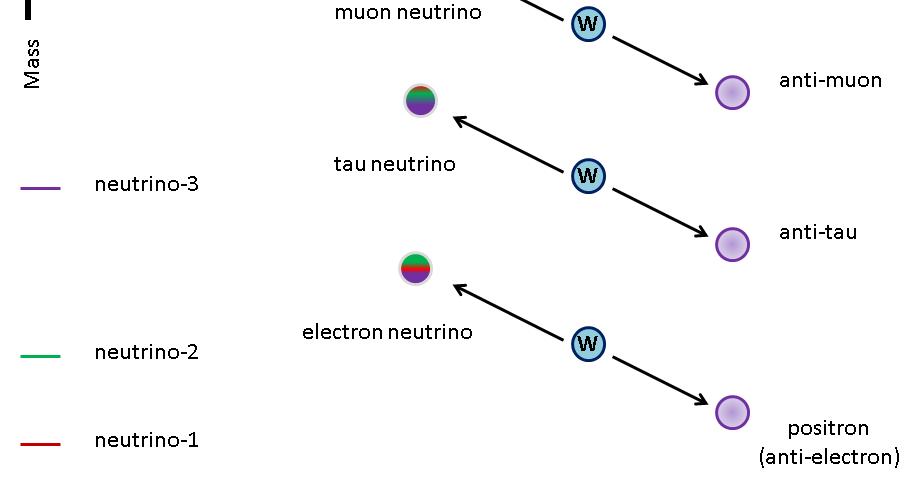
Neutrino oscillation is a quantum mechanical phenomenon whereby a neutrino created with a specific lepton flavour (electron, muon, or tau) can later be measured to have a different flavour. The probability of measuring a particular flavour for a neutrino varies periodically as it propagates through space.
First predicted by Bruno Pontecorvo in 1957, neutrino oscillation has since been observed by a multitude of experiments in several different contexts. Also, it turned out to be the resolution to the long-standing solar neutrino problem.
Neutrino oscillation is of great theoretical and experimental interest, since observation of the phenomenon implies that the neutrino has a non-zero mass, which was not included as part of the original Standard Model of particle physics. The discovery of proof for neutrino oscillation, and thus neutrino mass by Takaaki Kajita at the Super-Kamiokande Observatory and Arthur McDonald at the Sudbury Neutrino Observatory won them the 2015 Nobel Prize for Physics. Wikipedia, Neutrino Oscillation
See Also
Center of Oscillation
Law of Corporeal Oscillations
Law of Pitch of Atomic Oscillation
Law of Sympathetic Oscillation
Law of Variation of Atomic Oscillation by Sono-thermism
Law of Variation of Atomic Oscillation by Temperature
Law of Variation of Atomic Oscillation by Electricity
Law of Variation of Pitch of Atomic Oscillation by Pressure
molecular oscillation
Neutrino
Oscillation
Part 13 - Rotation from Vibration and Oscillation
planetary oscillation
Sympathetic Oscillation
Sympathetic Planetary Oscillation
8.2 - Oscillation versus Vibration
8.18 - Oscillation
8.19 - Law of Corporeal Oscillations
8.20 - Law of Sympathetic Oscillation
8.27 - Law of Sympathetic Oscillation
